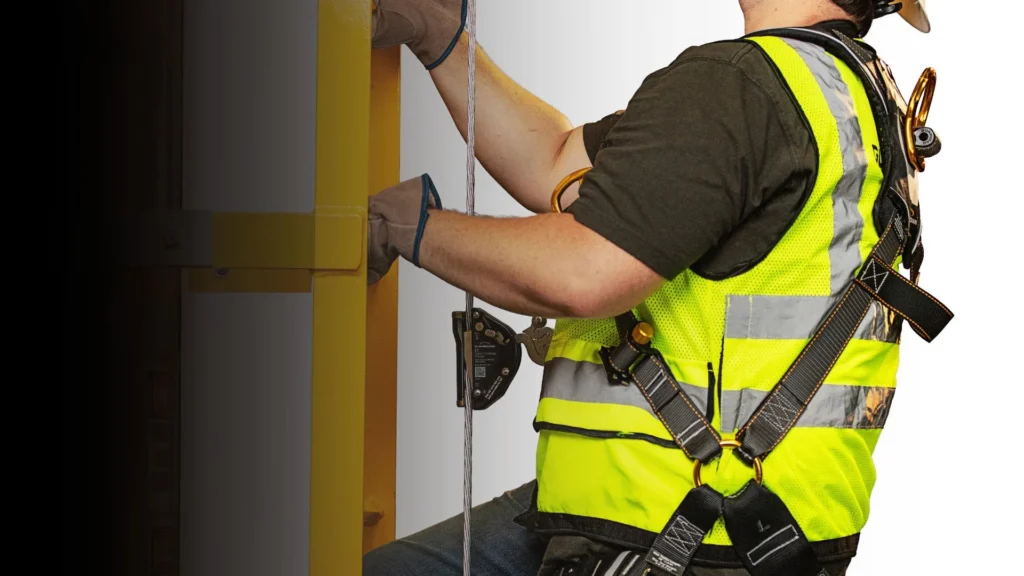Keeping your team safe is non-negotiable, especially when it comes to fall protection. But how do you know when your current system just isn’t cutting it anymore? Let’s break down the warning signs that your fall protection might need an upgrade—and what you can do about it.
- Noticeable Wear and Tear on Your Gear
Let’s be real: gear doesn’t last forever. If your harnesses or lanyards are starting to look rough, that’s a big red flag.
What should you look for?
– Frayed or cracked webbing
– Rust or corrosion on metal parts
– Bent, warped, or deformed hardware
– Loose or unraveling stitching
– Cuts or abrasions on straps
If you spot any of these, don’t take chances—replace the gear ASAP. Remember, worn-out equipment is a recipe for disaster if someone actually needs it. For more information and solutions on fall protection Philadelphia, make sure you’re staying up-to-date with the latest safety standards.

- Incidents or Near Misses Keep Happening
Have you had a few “close calls” lately, even though everyone’s following the rules? That’s a sign something’s up.
Here’s what to do:
– Encourage everyone to report near misses (not just actual accidents)
– Look for patterns. Are the same things happening over and over?
– Dig into the root cause: Is it human error, equipment failure, or maybe something in the environment?
Regularly reviewing these incidents helps you spot hidden problems and fix them before something serious happens.
- Your System Isn’t Up-to-Date with Regulations
Safety rules change, and so should your equipment. If it’s been a while since you checked your compliance, now’s the time.
Ask yourself:
– Are our harnesses and anchors up to current OSHA and ANSI standards?
– Do we have documentation and regular inspection records?
– Are we using outdated gear or setups that don’t meet today’s requirements?
Staying compliant isn’t just about avoiding fines—it’s about keeping your crew safe.
- Workers Complain About Comfort or Movement
If your team hates wearing their gear, chances are, they’re not using it right (or at all). Uncomfortable equipment leads to shortcuts and risky behavior.
Try these solutions:
– Offer harnesses with adjustable straps and better padding
– Choose lightweight materials that don’t weigh everyone down
– Regularly ask for feedback: “What’s bugging you about your gear?”
Happy, comfortable workers are much more likely to use safety equipment properly—no grumbling, no shortcuts.
- Inspections Reveal Gaps or Weak Spots
Regular inspections are your best friend. They often turn up issues you might never notice otherwise.
During inspections, check:
– Harnesses and lanyards for wear and damage
– Anchoring points for stability and load capacity
– Guardrails for security and proper height
If you find problems, fix or replace the gear immediately. Don’t wait for something to go wrong.
- The Work Environment Has Changed
Maybe you’ve renovated, added equipment, or changed your workflow. Any change can introduce new fall hazards.
Stay on top of changes by:
– Doing a fresh hazard assessment whenever the work site changes
– Identifying new risks from things like unprotected edges or new access points
– Updating your fall protection plan to match the new layout
Don’t assume your old system covers new challenges. Reassess and upgrade as needed.
Quick Checklist: Is It Time to Upgrade?
– [ ] Equipment shows signs of wear or damage
– [ ] Recent incidents or near misses have occurred
– [ ] Current system isn’t up to code
– [ ] Workers complain about comfort or movement
– [ ] Inspections reveal problems
– [ ] The work environment has changed
If you checked any of these, it’s time to take action!
Bottom line: Don’t wait for an accident to make changes. Regularly check your equipment, listen to your team, and stay up-to-date with regulations. Upgrading your fall protection isn’t just smart—it could save lives.
